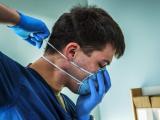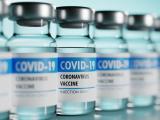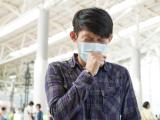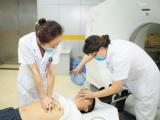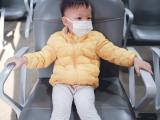Oct 20, 2003 (CIDRAP News) – In a new report on the epidemiology of SARS (severe acute respiratory syndrome), the World Health Organization (WHO) affirms that the disease is spread by respiratory droplets, not by airborne particles.
The 35-page report, issued Oct 17, also says the risk of transmission to others peaks when a person has been sick for about 10 days and that children are rarely affected by SARS.
The WHO said the report draws on experiences from all the main SARS outbreak sites and presents the consensus of experts in public health, epidemiology, and clinical virology. The report was issued just before the start of four SARS meetings at WHO headquarters in Geneva. Starting today, the sessions focus on research priorities, laboratory issues, clinical treatment protocols, and vaccine development.
Some SARS outbreaks, such as those in Hong Kong's Metropole Hotel and Amoy Gardens apartment complex, raised suspicion that the virus could spread via airborne particles. But the WHO said it found no evidence that SARS is an airborne disease.
"At all outbreak sites, the main route of transmission was direct contact, via the eyes, nose, and mouth, with infectious respiratory droplets," the WHO said in a news release. "The finding that each patient infected on average 3 others is consistent with a disease spread by direct contact with virus-laden droplets rather than with airborne particles. For diseases where the causative agent is airborne, such as influenza and measles, a single person can infect an entire room by coughing. There is no evidence that this occurred with SARS. For this reason, simple infection control techniques, such as frequent hand washing, can go a long way toward slowing the spread of disease."
The report, however, notes that procedures that aerosolize respiratory droplets or other potentially infectious materials may increase transmission of SARS. The virus's ability to survive in the environment needs further study, and surfaces should be cleaned without generating "dangerous aerosols," the document says.
The WHO also said shedding of the virus from the respiratory tract peaks around the tenth day of illness and then declines. Patients who are severely ill or rapidly getting sicker are most likely to pass the disease to others. "When symptomatic cases were isolated within 5 days following onset of illness, few cases of secondary transmission occurred," the agency said. It also said there was no evidence that patients can transmit the infection later than 10 days after fever has resolved.
In other conclusions, the WHO said there have been no reports of SARS transmission from children to other children and only two reported cases of transmission from children to adults. Three studies have found no evidence of SARS transmission in schools, and no evidence of SARS has been found in infants of mothers who were infected while pregnant, the agency said.
Other findings cited in the news release were as follows:
- Healthcare workers accounted for 21% of all SARS cases, ranging from 3% of probable cases in the United States to 43% in Canada. Some healthcare workers caught the disease despite wearing masks, eye protection, gowns, and gloves.
- The outbreak in the Metropole Hotel is still not fully understood. There, SARS spread from one hotel guest to at least 16 other guests and visitors, leading to outbreaks in several other countries. Samples from the carpet outside room 911, where the index patient stayed, were positive for SARS virus RNA (but not viable virus) 3 months after the outbreak.
- Cases of SARS transmission were linked to five international flights. There were no confirmed cases of transmission on flights after the WHO's March 27 advisory concerning exit screening and other measures to prevent the virus from spreading via air travel.
The four SARS meetings starting today in Geneva will continue through Nov 1, the WHO said.
See also:
WHO news release
http://www.who.int/csr/sars/archive/epiconsensus/en/
Full text of WHO report
http://www.who.int/csr/sars/en/WHOconsensus.pdf
